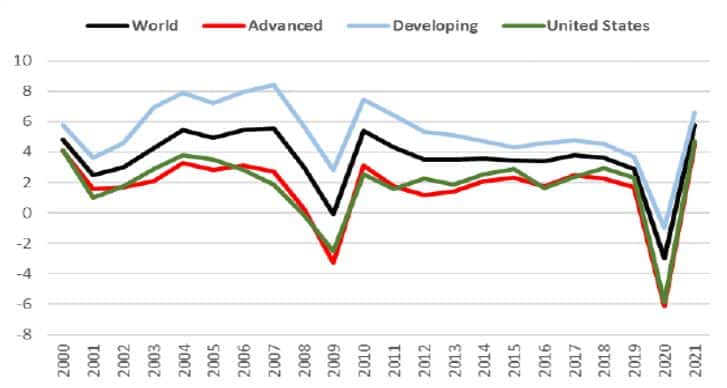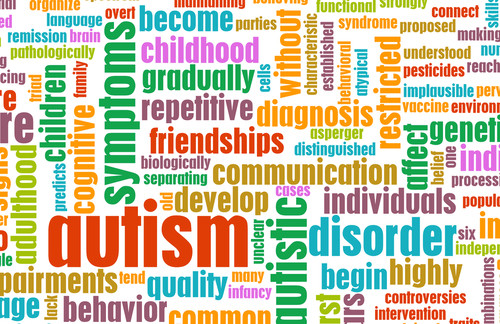Statistics Project – Comparing Two Populations
Statistics Project – One of the most powerful platforms in existence today is social media. The use of social media is one of the primary things that distract us as human beings, and it may have a greater influence on our thoughts and the way we go about our lives daily than we realize.
By determining the average number of hours per day that males and females spend using social media, this study aims to assess the extent to which social media impacts men and women. The number of hours people spend on social media is broken out for you in this research.
You can tell from the responses that people gave how many spend more than ten hours daily on social media. To test the hypothesis that there is no significant difference between the mean values of time spent on social media by men and women, online surveys and questions were posed to several colleagues in our college who are active on social media.
After categorizing respondents according to whether they were male or female, we next asked them a series of questions based on the average number of hours per day that they spent using various forms of social media platforms.
The data was also obtained by interviewing our colleagues in college after class. A two-sample t-test was used to examine the results of the responses. c since the p-value is less than the Alpha value.
This indicates that the null hypothesis is false and that women spend more time on social media than men do on average throughout the day. Based on this, we do not accept the null hypothesis, and there is adequate evidence to attest that this is the case.
The Question
How many hours in a day do male and female people spend on social media platforms like Facebook, Twitter, and Instagram? Is it true that women spend more time than men do on social media?
The data that was collected by sampling 40 men and 40 women says that the mean average of hours spent by males is μ= 7.125.
The significance level used is 0.05 (Alpha value)
Sampling
The sample deployed is convenience sampling because the data I obtained came from my colleagues in college. In other words, the sample comprises people who are easily accessible to the researcher. I could only collect some of the data I needed from school, so I decided to post the questionnaires online for my social media friends to fill the gaps.
I questioned a total of forty males and forty females, which gives me a sample size (n) of forty for both of the populations I was interested in. “How many hours a day would you say that you spend on social media?” was the question I posed to my friends on various social media platforms.
After I had collected some of my data, I started to inquire further by asking, “Which social networking app would you say you use the most?” This is a question I wanted to ask since I believed it would make the meaning more interesting. It would be more intriguing.
Surprisingly, the majority of the people surveyed, both male and female, claimed that Whatsapp is where they spend most of their time online. Except for the remaining subjects that I questioned my colleagues in school because they were a bit older, half of them said Instagram and Whatsapp and the other half couldn’t give an exact answer because they said that they spend the same amount of time on all of the social media that they have.
Data Table Statistics Project
Significance Test
H0: μ1 = μ2
H1: μ1 > μ2
μ1 is the mean number of hours men spend a day on social media
μ2 is the mean number of hours women spend on social media
Hypothesis 1: The study’s hypothesis is the difference in hours taken by men and women on social media platforms.
Ho denotes the null hypothesis
The letter H1 denotes the alternative hypothesis.
Ho: There is no difference between the mean values of males and females.
H1: There is a difference between the mean values of males and females.
Hypothesis 2: The difference between the hours spent on social media by men and women
Ho: Females spend fewer hours on social media than men.
H1: Females spend three more hours on social media than men.
Hypothesis Assumptions
If the alternative hypothesis, H1, is correct, we can deduce that women spend more of their waking hours on social media than males. Assuming that the alternative hypothesis is correct, we may deduce from the data that the mean and average values are extremely different.
P – Value
A statistical test will produce a p-value, a probability that informs you how likely it is that you found a particular data set, given that the null hypothesis is correct. This probability is determined by the test results (Pagano et al., 2022).
The P value for the study is 0.00837, which is less than the alpha value (0.05); therefore, we reject the null hypothesis. We conclude that the alternative hypothesis is correct.
Significance Test Conclusion
Because the P-value is lower than the significance level, we have concluded that the null hypothesis should be rejected. We conclude that there is a significant level even though we reject the hypothesis known as the null hypothesis, which states that there is no difference between the means.
Sampling Method Strengths
The sampling method used in this case was an effective one. By combining convenience sampling and online surveys, I could reach a large sample size of 80 people, both male and female. This allowed for the results to be more reliable and valid.
Moreover, by asking specific questions regarding the use of social media, I was able to obtain more detailed data and draw more meaningful conclusions. Overall, this sampling method provided the necessary data to analyze and draw conclusions.
Weaknesses
The sampling method used in this case also had some weaknesses. The main weaknesses of this method are the lack of randomization and the lack of representative sampling. It could not access a representative sample of the population by relying mainly on convenience sampling and online surveys.
Furthermore, the lack of randomization meant that it could not be certain that the sample accurately represented the whole population. Additionally, it could not obtain data from certain groups, such as the elderly, which could have provided additional insight into the use of social media. Therefore, the sample used in this case needed to be more representative.
What Could Be Done Differently?
If I were to do the study again, I could use a more comprehensive sampling method. Instead of relying mainly on convenience sampling and online surveys, I could use a combination of different sampling methods, such as stratified sampling and random sampling.
This would allow us to obtain a more representative sample of the population and ensure that the sample accurately represents the whole population. Additionally, I could use a larger sample size to increase the reliability and validity of the results. Furthermore, I could use a different set of questions or survey methods to gain a deeper understanding of the use of social media.
Overall, a more comprehensive sampling method would allow me to obtain more accurate and detailed data, ultimately leading to more meaningful conclusions.
Extraneous Variables, Which Became an Issue
One extraneous variable I had yet to anticipate was the age of the subjects. As I relied mainly on convenience sampling and online surveys, I needed help accessing a representative sample of the whole population. This is because certain age groups, such as the elderly, were not included in the sample due to the lack of access.
Additionally, certain age groups may use social media differently from other groups, which could lead to inaccurate results. Furthermore, the lack of randomization meant that certain age groups may have been over- or under-represented in the sample, which could have impacted the results.
How To Resolve
If I were to do the project over, I would use a combination of different sampling methods to obtain a more representative sample of the population. Specifically, I would use a combination of stratified and random sampling to ensure that the sample accurately represents the whole population.
Additionally, I would use a larger sample size to increase the reliability and validity of the results. Furthermore, I would also use a different set of questions or survey methods to obtain a deeper understanding of the use of social media. Overall, using a more comprehensive sampling method would obtain more accurate and detailed data, ultimately leading to more meaningful conclusions.
Extrapolation
I am comfortable extrapolating my results to the population of young adults aged 18-25 years old. This is because this was the age group that was mostly represented in my sample. Additionally, this age group is most likely to be the main social media users, as they are more likely to be tech-savvy and use social media more frequently than other age groups.
Moreover, this age group is also the most likely to be impacted by the use of social media, as they are in the process of establishing their identities and are more likely to be influenced by the content they see online. Therefore, I am comfortable extrapolating my results to this population.
Conclusion
This study found that males and females use social media differently. Women spend more time on social media than males, the research found. This means women are more influenced by social media and internet information. The study emphasized employing a broad sampling approach to get accurate results.
By combining sampling methods, a more representative population sample can be obtained, leading to more valid results. This study sheds light on social media use and its impact on individuals.
This study reveals gender variations in social media use. It shows the need for a comprehensive sampling approach and that males and females use social media differently. This study’s conclusions can be utilized better to understand social media’s effects on individuals and target messages and content to different groups.
References
Pagano, M., Gauvreau, K., & Mattie, H. (2022). Principles of bio-statistics. CRC Press.
Relevant Statistics Project Posts
Unemployment, Inflation and Production
If you enjoyed reading this statistics project post, I would be very grateful if you could help spread this knowledge by emailing this post to a friend, or sharing it on Twitter or Facebook. Thank you.






